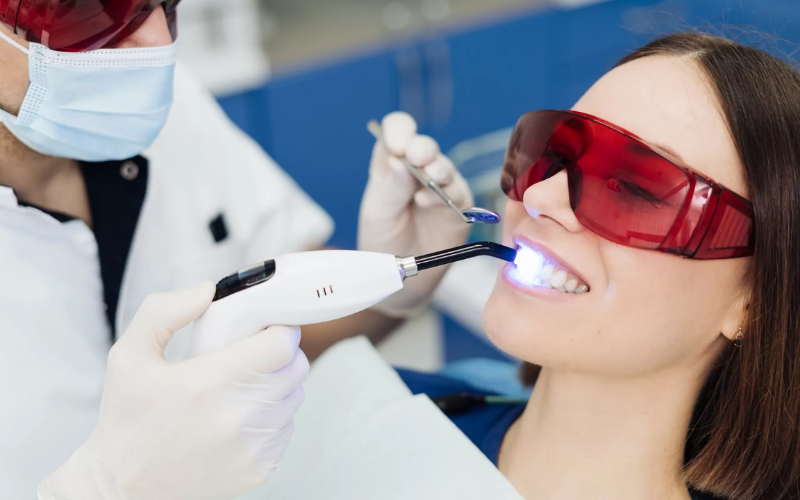Thousands of new cases of oral cancer are detected every year, making it a severe health problem. The American Cancer Society estimates that there will be about 54,540 new cases of oral cancer detected in 2024 alone. Improving treatment results and survival rates requires early identification.
Laser dentistry is one of the most promising developments in this area since it provides a less intrusive and more accurate method of detecting oral cancer. We’ll look at how laser technology is changing the field of oral cancer detection and screening in this blog.
Possible Symptoms and Dangers of Oral Cancer
Any malignant development that develops in the mouth, including the lips, tongue, gums, and inner lining of the cheeks, is referred to as oral cancer. Detecting and preventing it earlier can be acknowledged by its risk elements, which contain:
Smoking tobacco and alcohol addiction. These cancers are associated with specific strains of HPV. Also, radiation can cause cancer of the lips. When one crosses the age of 40, the chance of getting these types of cancers gets higher.
Signs to recognize
The possible signs of oral cancer are wounds that won’t go away, unexplained swelling or lumps, difficulty chewing or swallowing, alterations in speech or voice, areas in the mouth that are red or white.
How Is Oral Cancer Detected With Laser Technology?
Laser dentistry can help with the early diagnosis of oral cancer through various diagnostic methods. They are:
-
Imaging using Fluorescence
A laser exposes oral tissues to a certain wavelength of light. The fluorescence of healthy tissues differs from that of malignant tissues. This technique can spot anomalous regions before outward signs of illness show up.
-
Breakdown Spectroscopy Induced by Lasers (LIBS)
This method uses high-energy laser pulses to analyze the elemental makeup of tissues. Changes in chemical composition linked to malignant alterations can be detected using LIBS.
-
With Thermal Pictures
Temperature changes in tissues, which could be a sign of inflammation or aberrant growth. It can also be evaluated using lasers.
-
By Conducting a Laser Biopsy
Laser technology can be used to perform a biopsy if worrisome lesions are found. A professional dentist will carefully remove a tiny sample of tissue from the infected area using a laser and then the surgery is carried out under local anesthesia to guarantee the comfort of that patient. To check for the presence of cancer cells, the excised tissue is sent to a lab for analysis.
Laser dentistry is an important development in the diagnosis of oral cancer, which gives the dentists strong tools to recognize and diagnose potentially fatal diseases. In terms of improving patients’ comfort, laser technology significantly increases the accuracy of diagnosis due to its precision, minimally intrusive nature, and capacity to provide real-time insights.
The use of laser dentistry in routine screenings can lead to earlier identification and better patient outcomes as knowledge of oral cancer and its risk factors continues to rise. So, don’t delay in scheduling a consultation with our dentist today to gain more information on this innovative procedure.

